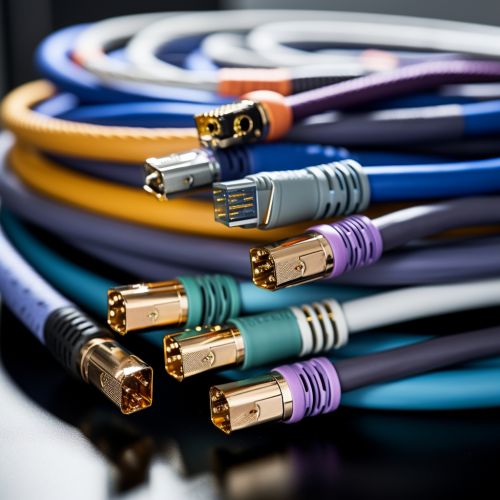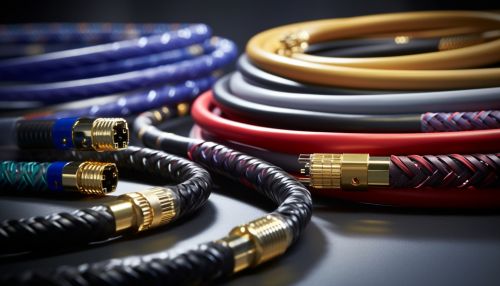Guided Media
Introduction
Guided media, also known as bounded or wired media, refers to the transmission of data over a physical path. The data signals are confined within a specific path, such as a wire or cable, which guides the signals from the source to the destination. Guided media is commonly used in telecommunications, computer networking, and other data transmission systems. The most common types of guided media include twisted pair cables, coaxial cables, and fiber-optic cables. Each type has its unique characteristics, advantages, and disadvantages, which make them suitable for different applications.


Types of Guided Media
Twisted Pair Cable
Twisted pair cable is a type of guided media that consists of two insulated copper wires twisted around each other. The twisting helps to reduce noise interference from external sources. There are two types of twisted pair cables: Unshielded Twisted Pair (UTP) and Shielded Twisted Pair (STP). UTP is commonly used in telephone and computer networks, while STP is used in environments where additional noise protection is required.
Coaxial Cable
Coaxial cable, often referred to as coax, is another type of guided media. It consists of a central copper conductor surrounded by a plastic layer for insulation, a metal shield, and an outer plastic covering. The metal shield helps to prevent electromagnetic interference, making coaxial cable suitable for carrying high-frequency signals such as those used in cable television and internet connections.
Fiber-Optic Cable
Fiber-optic cable is a high-speed guided media that uses light to transmit data. It consists of thin strands of glass or plastic known as optical fibers. Each fiber is coated with a cladding layer that reflects the light back into the fiber, allowing it to carry signals over long distances with minimal signal loss. Fiber-optic cables are used in telecommunications, internet connections, and other high-speed data transmission applications.
Advantages and Disadvantages of Guided Media
Guided media offers several advantages over unguided media, which includes wireless transmission methods. These advantages include higher data transmission rates, less interference, and greater security. However, guided media also has some disadvantages, such as the cost and complexity of installation, limited mobility, and potential for physical damage.
Applications of Guided Media
Guided media is used in a wide range of applications, from home internet connections to global telecommunications networks. Its ability to carry high-speed data signals over long distances makes it an essential component of modern communication systems.
